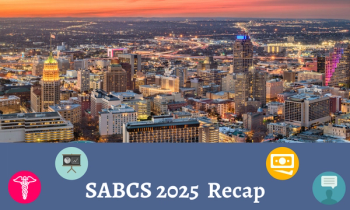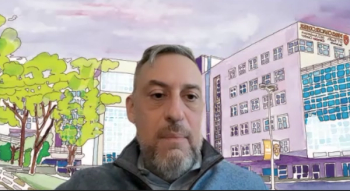
Optimizing Oncology Care Through Academic–Community Partnerships and Real-World Evidence: Clayton Irvine, PharmD, MBA, MS
Clayton Irvine, PharmD, MBA, MS, explains that leveraging high-quality, real-world data; cross-institutional collaboration; standardized care pathways; advanced technologies; and integrated academic–community oncology partnerships can improve treatment decision-making, reduce financial toxicity, address drug shortages, and optimize infusion center efficiency.
At a recent
Irvine also underscored the value of academic–community oncology partnerships in addressing financial toxicity, drug shortages, and infusion center efficiency, noting that joint treatment pathways, real-time multidisciplinary communication, expanded patient and financial navigation services, and pilot programs for bundled payments or specialty pharmacy integration can enhance care coordination and optimize resource use across multiple sites.
This is the first video in a series with Irvine.
This transcript was lightly edited; captions were auto-generated.
Transcript
How can real-world data be more effectively incorporated into pharmacy decision-making to support both the adoption and de-implementation of therapies that may not deliver expected value in practice?
I think real-world data is a very powerful tool, and despite some of the bias that may be associated with real-world data, it's a really great resource that we have to help drive or start the conversations with some of these decisions. I think one of the big questions that we have to ask ourselves is, what sources of rural data are we looking at? I think when we use patient registries and data from electronic health records, that's really top-of-the-line, gold standard, in my opinion.
Then I think, we really need to ensure that we're collaborating with academic centers and working across the board so that we have a really great representation of the question that we're trying to solve, the patient population, the drugs, the treatments in question. I would say that's another piece of it.
Additionally, I do really think that we need to focus as a system on how we collect and how we standardize the information. Then is there a role for EHR dashboards, AI, and some of those other technologies that can really help us bridge the gap that currently exists with real-world data collection and validity. There's an evolving landscape, in my opinion, and one that I'm really excited about. But I do think in today's day, it's a great resource and a great tool to start those conversations.
In some circumstances, I do think we are seeing cases where it is effective to make those decisions from both what is best for having on formulary, what is best to have on pathways, or maybe what's the best decision for certain patient populations.
How can academic and community oncology partnerships collaborate to reduce financial toxicity, manage drug shortages, and optimize infusion center efficiency while navigating reimbursement challenges?
Where applicable, I think joint pathways are really important. When you have a center that has multiple sites, being able to have some way to standardize your order sets, your treatment plans, the decisions that are made for how you treat patients, is really important when it comes to just trying to create standardization across the board. Using some type of real-time communication is key. Oftentimes, we see gaps or failures break down when we don't have communication. It's not just between pharmacists, but it's between nursing and pharmacy, [advanced pharmacy practitioners, nurse practitioners,] providers, financial and navigation, social work, which is another important key to that—I think we really need to use financial navigation.
Many institutions have started to expand the outreach with our patient navigation and financial navigation, so we are seeing those individuals have more interactions, not just with the care team, but with patients. I think that's really, really important. I also think that highlighting and collaborating to set up pilot programs, so maybe not at all sites, but at 1 site for bundle payments or specialty pharmacy use. How do you integrate with specialty pharmacies, and how are you leveraging those relationships and connections to look at those models?
I think it's really important to, if you're not doing it, to start today. When you have multiple sites and community oncology sites where patients are usually coming in, getting some type of diagnosis, and/or coming in and being referred to larger academic centers, we have to have a better approach and pathway plan.
Newsletter
Stay ahead of policy, cost, and value—subscribe to AJMC for expert insights at the intersection of clinical care and health economics.







































